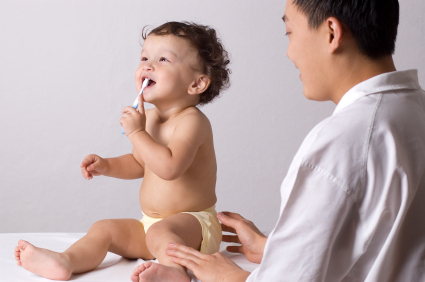Teething is the time when a baby’s primary teeth (milk teeth) start cutting through the gums. The age for the appearance of the first tooth may vary, ranging from six months up till around one year or even longer.
The front bottom teeth are usually the first to erupt.
Most children have all their primary teeth by about the age of two and a half.
Symptoms of Teething
Some teeth come through with no trouble or pain at all, whereas other times the baby may suffer from one or more of the following:
- Restlessness.
- Disturbed sleep.
- Sore, red gums.
- One or both flushed cheeks.
- A slight rise in temperature.
- Loss of appetite.
- Dribbling.
- Gnawing or chewing objects.
How can I help ease the symptoms of teething?
There are a number of ways to help your baby through teething:
- Rubbing the gums with a clean finger.
- Rubbing the gums with sugar-free teething gel for babies over four months old such as Bonjela.
- Giving the baby a teething ring to bite on, or a cold piece of carrot (but stay nearby in case of choking).
- Giving sugar-free paracetamol to help ease the discomfort and aid sleep. Ask your GP or pharmacist for the suitable dosage for your baby’s age.
Last but not least:
It is very important that the parents or carers of the baby are vigilant and do not put down these common symptoms only to teething. In some cases, especially if the baby’s temperature exceeds 39 degrees, it could be that these symptoms are due to illness and not teething.
If there is considerable delay in your baby’s teething (after the age of eighteen months), ask your dentist for advice.
